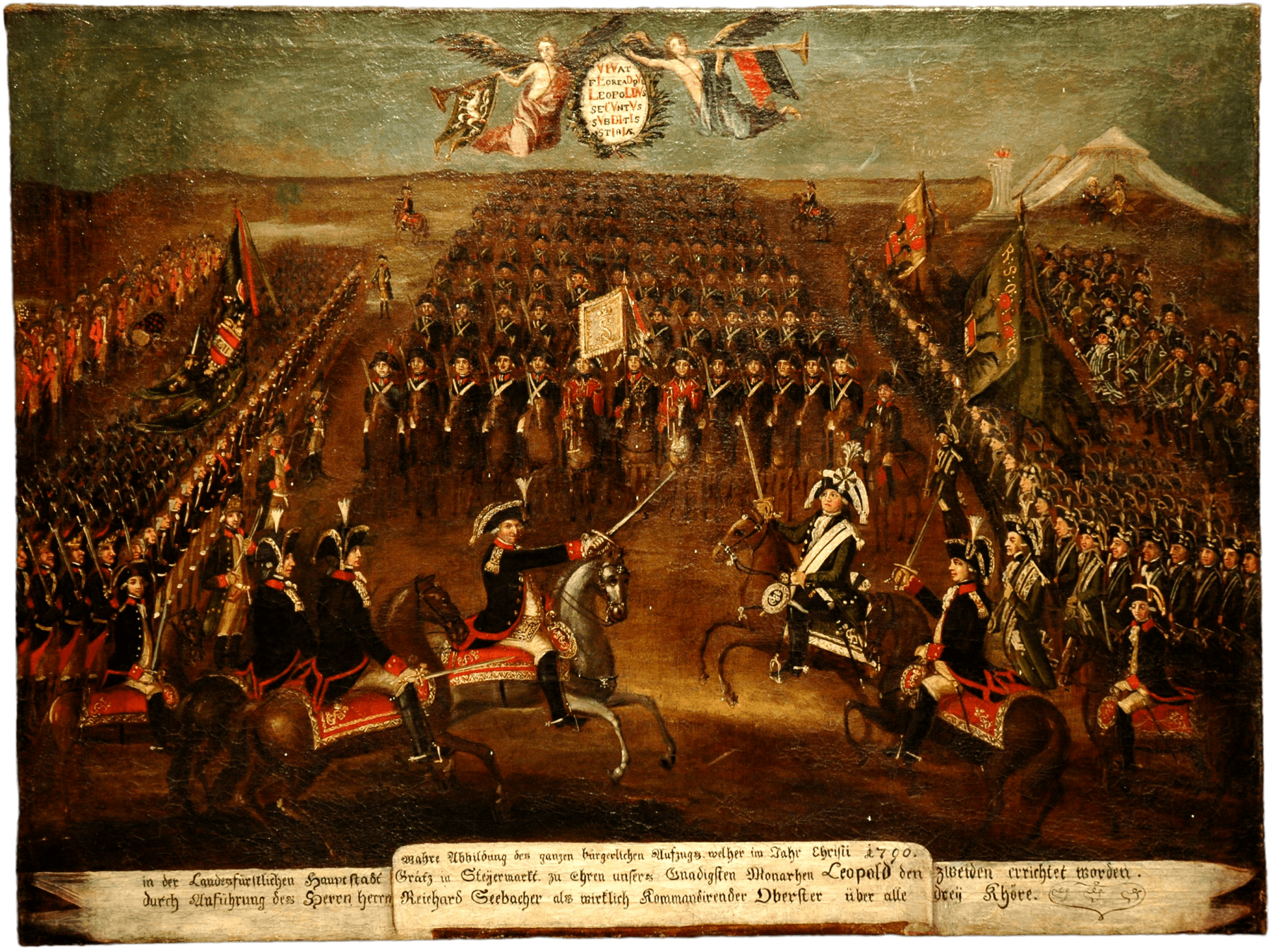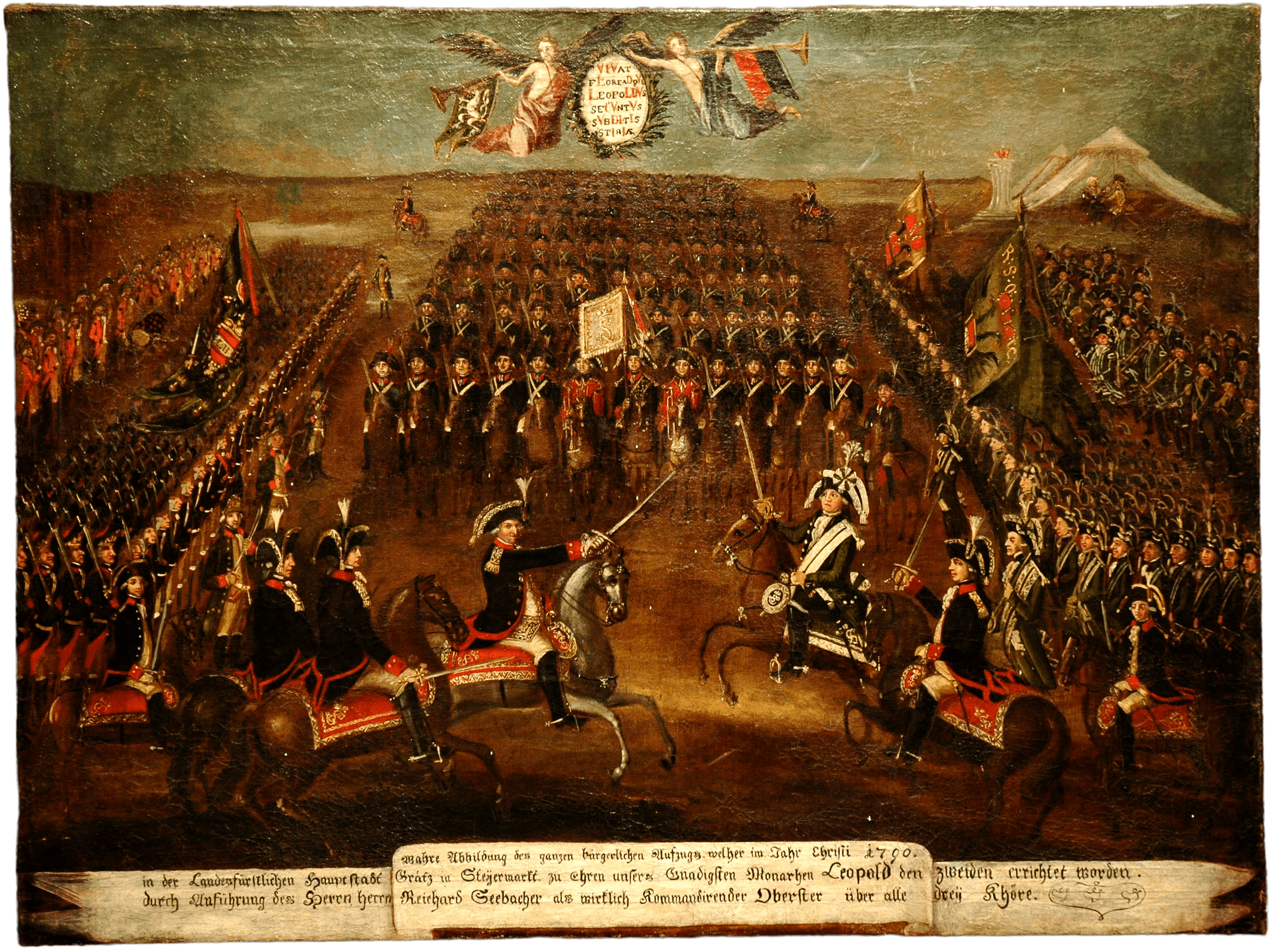
Emperor Leopold II is watching a parade organised in his honour from a tent. As the successor of his brother Joseph II he is considered as the last enlightened Habsburg monarch.
Overall, three corps units are shown in this image. In the centre, there is the corps of the cavalry next to them on the left side, the corps of the infantry, and to the right, the “Jäger” (riflemen) behind whom the musical corps of the trumpets, oboes, and drums is forming.
Colonel Seebacher (to the left) and Lieutenant Colonel Dobler (to the right) are heading the parade. Master brewer and innkeeper Richard Seebacher heads all corps units as the commander. In 1792, the tradesman Franz Kaspar Dobler follows him in this function. In the latter, he received Napoleon in 1797.
Civic Corps parade Unknown, around 1790
The City’s Loss of Importance:
The painting shows a parade of the Graz Civic Corps, which was performed for Emperor Leopold II in 1790. The Graz Civic Corps had its origin in the medieval vigilantes. Beside taking part in the military campaigns of the territorial rulers, the latter were responsible for fortifying and defending the city, and safeguarding law and order. Maria Theresia centralised these functions by means of standing armies. The vigilantes lost some of their importance, and thus the cities their military self-administration. Only when the French occupied Graz in 1797, 1805 and 1809, did they reappear to ensure public safety, and prevent looting and violent clashes.
Oil on canvas
frame: 79 × 105 cm
Graz Museum / Photo: Edin Prnjavorac
